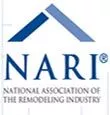- 1320 McKinley Avenue, Suite B, Columbus, OH 43222
- |Contact Us
How Much Insulation Do You Need in Ohio?
Homeowner’s Guide to Insulation
Insulation is a crucial component of your home, helping to keep you comfortable all year. Heat moves from warmer to cooler areas, so without proper insulation, the summer heat will creep into your cool home, and you’ll lose heat in the winter.
Adequate insulation has many benefits, including reduced strain on your HVAC system, energy savings and improved comfort. Edwards/Mooney & Moses is here to provide you with an expert guide on insulation.
How to Choose the Right Insulation for Your Ohio Home
There are many types of insulation to choose from, but for maximum energy efficiency and comfort, it’s important to choose the right insulation for you. Here’s how:
- Consider your home’s unique needs: You should consider your home’s unique needs in addition to the temperature variations and humidity of where you live. Consider factors such as the size of your home, existing insulation, areas that need improvement and your home’s structure/materials.
- Assess your budget: Different insulation materials come at different price points, so it’s important to consider your needs and budget so you only pay for what you need. It’s also good to remember that some insulation may have a higher initial cost but will save you money in the long run.
- Understand installation options: When installing new insulation, you can try to do it yourself or hire an experienced professional. DIY installations may be cheaper, but if you don’t have the proper tools and training, your home may not be insulated properly. Professional installation ensures the job gets done right.
Different Types of Insulation
When it comes to choosing materials, our team is here to help. Consider the following options and speak to one of our insulation professionals to pick the best material for you.
1. Fiberglass
Fiberglass is made from recycled glass and is the most commonly used material. Fiberglass is cost-effective, easy to install, highly thermal-resistant and fire-resistant. However, fiberglass can be irritating to the skin and requires proper installation to avoid gaps.
2. Foam Board
Foam board insulation is made from plastics, making it a strong, self-supporting material. Foam board has a high insulating value per inch and is highly moisture-resistant, but it’s pricier than other materials and requires precise cutting/fitting.
3. Spray Foam
Spray foam is a chemical composite sprayed directly where you want your insulation installed. It’s applied wet and expands into a thick foam to take the shape of the space it’s in, filling in gaps and cracks. Spray foam has a high R-value and air-sealing properties, but it can be expensive and requires professional installation.
4. Cellulose
Cellulose is an eco-friendly option containing up to 85% recycled materials. It also takes less energy to make, is a good air barrier and has excellent soundproofing qualities. However, cellulose can settle over time, becoming less effective, and it may require pest control treatment.
5. Mineral Wool
Mineral wool is a fiber insulation made from natural materials. It has excellent fire resistance and good soundproofing properties, but it can be pricier and may require protective gear during installation.
What Is Insulation R-Value & Why Is It Important?
R-value measures how well insulation materials resist heat transfer. The higher the R-value, the more heat-resistant and effective the material is at insulating your space.
Based on Ohio’s climate, different R-values are recommended for different areas of your home. Recommended R-values include:
- Attics: R-49
- Walls: R-18
- Floors: R-25
- Crawl spaces: R-19
Different factors, such as location and home design, can influence your R-value needs. To choose the right R-value, it’s important to balance cost with recommended R-values to achieve optimal energy efficiency.
If you don’t want to replace your home’s insulation, there are ways to enhance your existing insulation, such as retrofitting. You can always speak to our professionals about when to consider upgrading or adding insulation.
Why Choose Us?
Many factors go into choosing the right insulation for your home, but it’s important to find the best fit for you. Edwards/Mooney & Moses is here for all your insulation needs.
Contact us today to learn more about which insulation is best for you or to schedule services.

Residential insulation helps homeowners reduce energy costs, improve indoor comfort, and enhance efficiency by properly sealing and insulating spaces with high-quality materials like fiberglass, spray foam, and blown-in cellulose.

Commercial insulation enhances energy efficiency, regulates indoor temperatures, and ensures code compliance for offices, warehouses, and multi-family properties using materials like spray foam, fiberglass batts, and metal building insulation.

Gutters protect homes and buildings by directing rainwater away from the foundation, preventing erosion, leaks, and water damage with durable seamless systems, gutter guards, and custom installations.

Air sealing prevents drafts, moisture buildup, and energy loss by sealing gaps and leaks in a home or building’s structure, improving comfort and efficiency while reducing heating and cooling costs.

A Home Energy Evaluation identifies inefficiencies in insulation, air sealing, and energy usage to help homeowners reduce costs, improve comfort, and enhance overall efficiency with expert recommendations.


 contact us Today
contact us Today Call Now: (614) 351 6640
Call Now: (614) 351 6640












